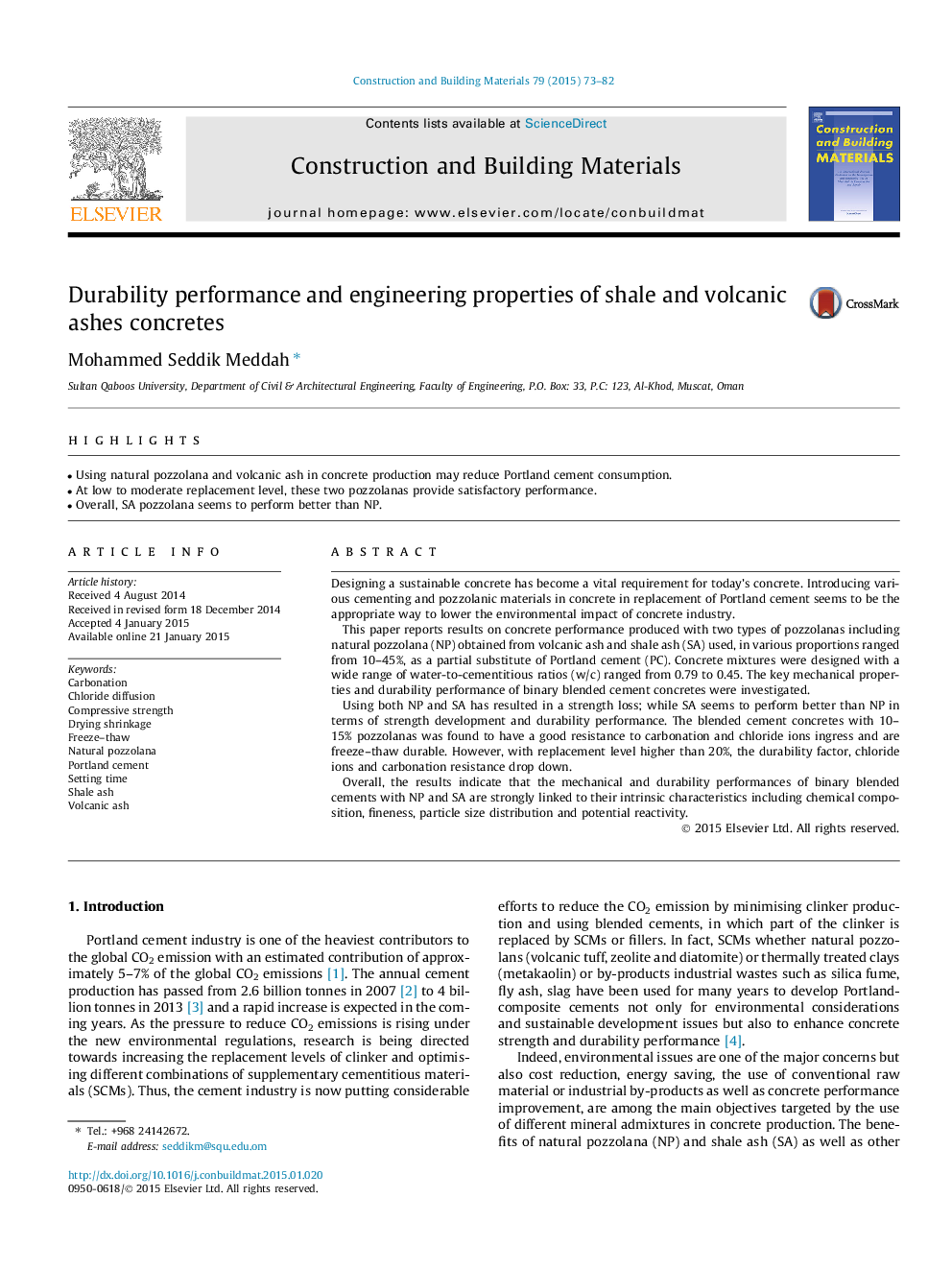| Article ID | Journal | Published Year | Pages | File Type |
|---|---|---|---|---|
| 257178 | Construction and Building Materials | 2015 | 10 Pages |
•Using natural pozzolana and volcanic ash in concrete production may reduce Portland cement consumption.•At low to moderate replacement level, these two pozzolanas provide satisfactory performance.•Overall, SA pozzolana seems to perform better than NP.
Designing a sustainable concrete has become a vital requirement for today’s concrete. Introducing various cementing and pozzolanic materials in concrete in replacement of Portland cement seems to be the appropriate way to lower the environmental impact of concrete industry.This paper reports results on concrete performance produced with two types of pozzolanas including natural pozzolana (NP) obtained from volcanic ash and shale ash (SA) used, in various proportions ranged from 10–45%, as a partial substitute of Portland cement (PC). Concrete mixtures were designed with a wide range of water-to-cementitious ratios (w/c) ranged from 0.79 to 0.45. The key mechanical properties and durability performance of binary blended cement concretes were investigated.Using both NP and SA has resulted in a strength loss; while SA seems to perform better than NP in terms of strength development and durability performance. The blended cement concretes with 10–15% pozzolanas was found to have a good resistance to carbonation and chloride ions ingress and are freeze–thaw durable. However, with replacement level higher than 20%, the durability factor, chloride ions and carbonation resistance drop down.Overall, the results indicate that the mechanical and durability performances of binary blended cements with NP and SA are strongly linked to their intrinsic characteristics including chemical composition, fineness, particle size distribution and potential reactivity.
